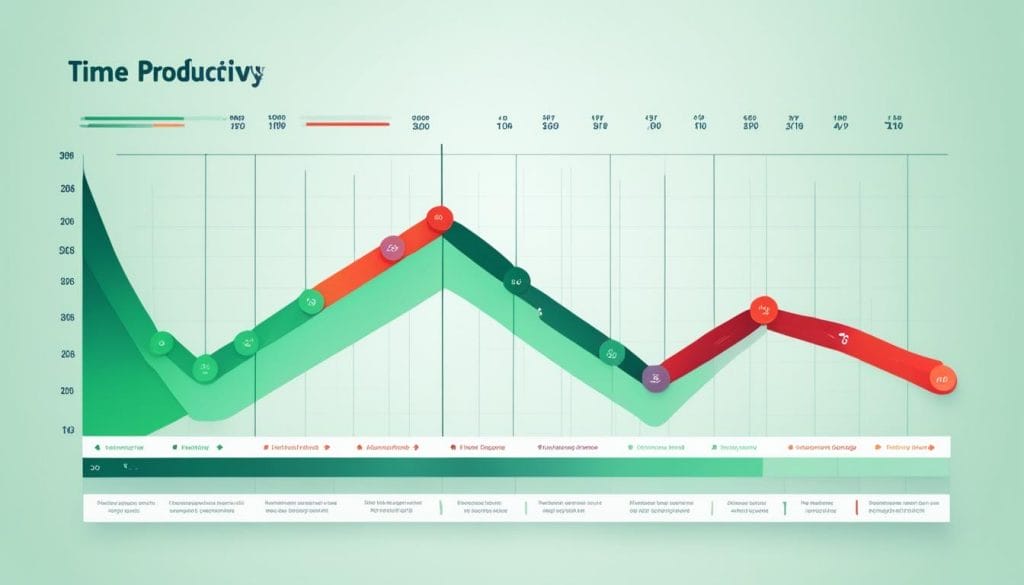Only 12% of employees feel their onboarding is great. This shows how important it is for companies to check and improve their onboarding. In today’s job market, making sure new hires feel welcome is key to keeping them and helping the company do well.
Metrics and KPIs for onboarding are key for HR to see how well new hires are doing. By looking at things like how many finish onboarding, how fast they start doing their job, and how happy they are, companies can make better onboarding plans. This helps keep employees around longer.
Success in onboarding is more than just finishing the program. It’s about how well new employees fit in and do well over time. By using these metrics, HR can find what needs work, use resources better, and make onboarding better for new people.
In this article, we’ll look at 12 important onboarding metrics and KPIs. We’ll talk about why they matter, how to figure them out, and how to use the data to make onboarding better.
Key Takeaways
- Only 12% of employees strongly agree their organization provides great onboarding
- Effective onboarding is crucial for retaining top talent
- Key metrics include completion rate, time to productivity, and satisfaction score
- Data-driven HR decisions can enhance onboarding strategies
- Comprehensive analysis of multiple factors is necessary for measuring success
- Tracking metrics helps identify areas for improvement and optimize resources
Understanding the Importance of Onboarding Metrics
Onboarding metrics are key to making sure new employees fit in well. They show how good your onboarding is. This helps HR teams make smart choices to make new hires happy.
Defining onboarding success
Success in onboarding is measured by a few important things. These are how many finish, how fast they start doing their job, and how happy they are. By watching these, companies can see what needs to get better in their onboarding.
Impact on employee retention and productivity
Good onboarding helps keep employees and makes them work better. Happy new hires tend to stay longer. For instance, Yotpo, a company in ecommerce marketing, kept more employees by making their welcome page better.
Data-driven decision making in HR
HR analytics help make smart choices about onboarding. With data, HR can spot trends, fix problems, and make the onboarding better. Take, a digital platform, got more users to start using their product by tracking user data during onboarding.
| Metric | Description | Impact |
|---|---|---|
| Completion Rate | Percentage of users finishing onboarding | Indicates process effectiveness |
| Time to Value | Duration to derive product value | Affects user satisfaction |
| Activation Rate | Users reaching key activation points | Linked to long-term retention |
By focusing on key onboarding metrics, companies can really boost their employee retention and make onboarding better. Tools like Appcues help track, analyze, and improve onboarding for better results.
Employee Onboarding Metrics and KPIs: An Overview
It’s key to track employee onboarding metrics and KPIs to see how well your program works. These metrics give insights into your process’s success and where you can get better.
Onboarding analytics look at different parts of the new hire’s experience. Important metrics are onboarding completion rate, time to productivity, and new hire satisfaction scores. By watching these, companies can make their onboarding better and improve performance.
- Onboarding Completion Rate: Measures the percentage of new hires who finish all onboarding tasks
- Time to Productivity: Tracks how quickly new employees reach full productivity
- New Hire Satisfaction Score: Gauges employee satisfaction with the onboarding process
- Employee Retention Rate: Monitors the percentage of new hires who stay with the company long-term
Having a good onboarding program can increase employee retention by 50%. This shows why it’s important to track and look at onboarding metrics for success.
| Metric | Description | Impact |
|---|---|---|
| Daily Active Users (DAU) | Measures daily user engagement | Insights into short-term user behavior |
| Monthly Active Users (MAU) | Tracks monthly user engagement | Long-term user retention indicator |
| Churn Rate | Percentage of users who discontinue service | Highlights potential onboarding issues |
| Employee NPS | Measures employee loyalty and satisfaction | Indicates likelihood of recommending the company |
By using these onboarding analytics, companies can make smart choices to improve their onboarding. This helps boost employee success.
Onboarding Completion Rate
The onboarding completion rate is key to knowing how many new hires finish the whole process. It shows if your onboarding works well and where you can get better.
Calculating Completion Rate
To find your onboarding completion rate, just use this formula:
(Number of employees who completed onboarding / Total number of new hires) x 100
For instance, if 45 out of 50 new hires finish, your rate is 90%.
Benchmarks and Industry Standards
Try to get your onboarding completion rate to 90% or more. A high rate means your process is fun and clear. Companies with great onboarding keep their employees longer and work better together.
| Industry | Average Completion Rate | Top Performers |
|---|---|---|
| Technology | 85% | 95% |
| Healthcare | 82% | 93% |
| Finance | 88% | 97% |
| Retail | 80% | 92% |
Improving Completion Rates
To make your onboarding better, try these tips:
- Make the process simpler to not overwhelm new hires
- Give clear instructions and what to expect
- Support new employees as they go
- Use fun multimedia to keep them interested
- Ask for feedback often to fix any issues
Working on your onboarding completion rate makes the experience better for new hires. It helps them do well in the long run.
Time to Productivity

Time to productivity is key in checking how well new employees do on the job. It shows how long it takes them to work at their best. This time changes based on the job and the employee’s experience.
To figure out time to productivity, set goals for each job and watch how new hires do. For instance, if five new workers hit their goals in 450 days, it takes the average 90 days. This info helps companies make their onboarding better and more efficient.
| Metric | Calculation | Example |
|---|---|---|
| Organizational Productivity | Total Output / Total Input | $50,000 / 1,000 hours = $50/hour |
| Individual Productivity | Employee Output / Employee Input | $20,000 / 100 hours = $200/hour |
| New Hire Time to Productivity | Total Days to KPI / Number of New Hires | 450 days / 5 new hires = 90 days |
Good onboarding makes a big difference in how fast new hires get up to speed. Companies with great onboarding keep 82% of their employees. By focusing on this, companies can make their workforce more efficient and improve onboarding.
New Hire Satisfaction Score
The new hire satisfaction score is key to knowing if your onboarding works well. It shows how happy new employees are and points out what needs to get better.
Measuring Employee Satisfaction
Companies use surveys, interviews, and feedback forms to check how happy employees are. These tools help see how the onboarding is going at different points. Sadly, only 12% of employees think their company does a good job with onboarding.
Importance of Feedback Collection
Getting feedback is vital to make the new hire experience better. Regular meetings during onboarding spot problems and what needs work. This is important because one in five new hires say they got poor or no onboarding.
“New hires who rated their onboarding experience as ‘exceptional’ were more than 2.5 times as likely to consider their place of work ‘extremely satisfying.'”
Acting on Satisfaction Data
Using feedback to make the onboarding better is crucial. Companies should fix common problems, improve training, and change their ways based on what new hires say. Doing this can really help, as great onboarding leads to keeping more new hires.
| Satisfaction Level | Impact on Job Perception | Productivity Increase |
|---|---|---|
| Exceptional | 70% report “best possible job” | 12% more productive |
| Poor | 33% quit within 90 days | No increase |
Improving the new hire satisfaction score makes onboarding better. This leads to happier employees, more people staying, and more work getting done.
Employee Retention Rate

Keeping employees is key to a company’s success and health. It shows how well a company keeps its workers and cuts down on leaving. In 2023, the US saw a 17.3% employee turnover rate, says Mercer. This shows why tracking how well employees stay is crucial.
To figure out the employee retention rate, use this formula:
((Total Employees – Employees Who Left) / Total Employees) x 100
A good rate is usually over 90%. Rates between 80-90% are okay too. Shri Ganeshram, CEO of Awning, says an 80% or higher is good, but other things matter too.
Companies can look closer at retention rates by department, manager, or group. This helps find where to get better. For example, looking at new hires shows how well onboarding works.
| Retention Metric | Formula | Target Rate |
|---|---|---|
| Overall Retention Rate | ((Total Employees – Leavers) / Total Employees) x 100 | >90% |
| Voluntary Turnover Rate | (Voluntary Leavers / Total Employees) x 100 | |
| New Hire Retention Rate | ((New Hires – New Hire Leavers) / New Hires) x 100 | >85% |
By watching these numbers closely, companies can make plans to keep more employees. This helps improve onboarding and lowers costs from losing workers.
Onboarding Cost per Employee
Knowing the onboarding cost per employee is key for businesses. It covers all costs from training to tech and admin fees.
Calculating Onboarding Costs
Add up all costs and divide by the number of new hires. This shows where you can save money.
| Expense Category | Average Cost |
|---|---|
| Training Materials | $500 |
| Technology Setup | $1,000 |
| Mentor Time | $800 |
| Administrative Costs | $700 |
Cost Optimization Strategies
Using tech for training and standardizing processes can lower costs. Peer mentoring also helps save money without losing quality.
ROI of Onboarding Investments
It’s key to measure the ROI of onboarding. Compare costs to productivity and how long new hires stay. A good program brings big benefits through less turnover and quicker productivity.
“Effective onboarding is an investment in employee success and company growth.”
By focusing on these areas, businesses can make onboarding cost-effective. This leads to long-term success and happy employees.
Onboarding Effectiveness Index
The Onboarding Effectiveness Index is a key tool for checking how well onboarding works. It looks at several important signs to give a full view of your program’s success. By looking at completion rate, time to be productive, satisfaction scores, and how long people stay, you see the whole picture.
To figure out this index, give each part a weight based on what matters most to your company. For instance, you might focus more on time to productivity if that’s a big deal for you. Then, add up the scores to find your total index.
This method helps you see how your onboarding is doing over time and compare it to others or your past. With 33% of top onboarding programs using social networking, think about adding this to your index.
| Metric | Weight | Score (1-10) | Weighted Score |
|---|---|---|---|
| Completion Rate | 25% | 8 | 2.0 |
| Time to Productivity | 30% | 7 | 2.1 |
| Satisfaction Score | 20% | 9 | 1.8 |
| Retention Rate | 25% | 8 | 2.0 |
| Total Index Score | 100% | – | 7.9 |
Good onboarding can keep new hires by 82% and make them more productive by over 70%. By keeping an eye on your Onboarding Effectiveness Index, you can spot what needs work. This helps you make smart choices to improve your onboarding and how well your employees do their jobs.
Key Performance Indicators for Long-term Success
Measuring success in onboarding is more than just looking at the start. It’s about seeing how new hires do over time. We’ll look at key signs that show how well employees do and how happy they are.
Employee Engagement Metrics
Getting employees to care about their work is key to doing well as a company. In 2022, only 32% of U.S. workers were really into their jobs, while 18% didn’t care at all. This lack of interest costs the U.S. economy a lot, between $450-550 billion a year.
To fight this, companies use tools like Culture Amp and Workday Peakon. These tools help figure out how engaged employees are.
Cultural Fit Assessment
Seeing if someone fits with the company’s culture is important for keeping them around. One company got 70% of their best workers by making sure they fit in well. Important signs to watch include:
- Employee Net Promoter Score (NPS)
- Voluntary turnover rate
- Percentage of “A Players”
Career Development Tracking
Keeping an eye on how employees grow in their careers is key to keeping them happy and around. Important things to watch include:
- Employee skills development
- Training completion rates
- Time to productivity
- Job performance impact
By checking these signs often, companies can make sure their onboarding works well over time. This makes employees happier and helps the company do better overall.
Conclusion
In today’s business world, onboarding metrics are very important. The US average employee turnover rate is 18%. Companies must focus on making a strong start for new hires.
Tracking key indicators like time to productivity, new hire satisfaction, and training completion rate helps. This way, companies can make their onboarding better.
Data-driven HR strategies are key for making smart onboarding decisions. For example, using Net Promoter Scores to check employee satisfaction is helpful. It shows that 86% of customers stay loyal to products with good onboarding.
Having a full set of onboarding metrics lets companies see how well they’re doing. They can track user retention and feature adoption rates. This gives a full view of the onboarding process.
By using these insights, businesses can get ahead, increase profits, and keep employees engaged for a long time.
FAQ
Q: What are some essential onboarding metrics and KPIs?
A: Key onboarding metrics and KPIs include onboarding completion rate, time to productivity, new hire satisfaction score, employee retention rate, onboarding cost per employee, and the onboarding effectiveness index.
Q: Why are onboarding metrics important?
A: Onboarding metrics help measure how well new employees fit in. This affects how long they stay, how well they work, and the success of the company. They help make better decisions to improve onboarding.
Q: How is onboarding completion rate calculated?
A: To find the onboarding completion rate, count how many new hires finish onboarding. Then, divide that by the total number of new hires. Multiply by 100. Aim for 90% or higher.
Q: What factors influence time to productivity?
A: Job complexity, training quality, and how fast someone learns affect time to productivity. Cutting down this time saves costs and boosts performance.
Q: Why is measuring new hire satisfaction important?
A: Happy new hires stay longer and work better. Feedback helps spot problems. This lets companies make onboarding better over time.
Q: How is employee retention rate calculated?
A: To find the employee retention rate, count how many employees are still there after a time. Divide that by the total new hires. Multiply by 100. A high rate means onboarding works well.
Q: What factors should be considered when calculating onboarding cost per employee?
A: Costs include training materials, tech, mentor time, and admin costs. Cutting these costs can lead to big gains in productivity and keeping employees.
Q: What is the onboarding effectiveness index?
A: It’s a mix of onboarding KPIs like completion rate, productivity time, satisfaction, and retention. This gives a full picture of how well onboarding works.
Q: What are some key performance indicators for long-term success?
A: Long-term success KPIs include how engaged employees are, how well they fit the company culture, and how they move up in their careers. These show future performance, motivation, and staying power.





